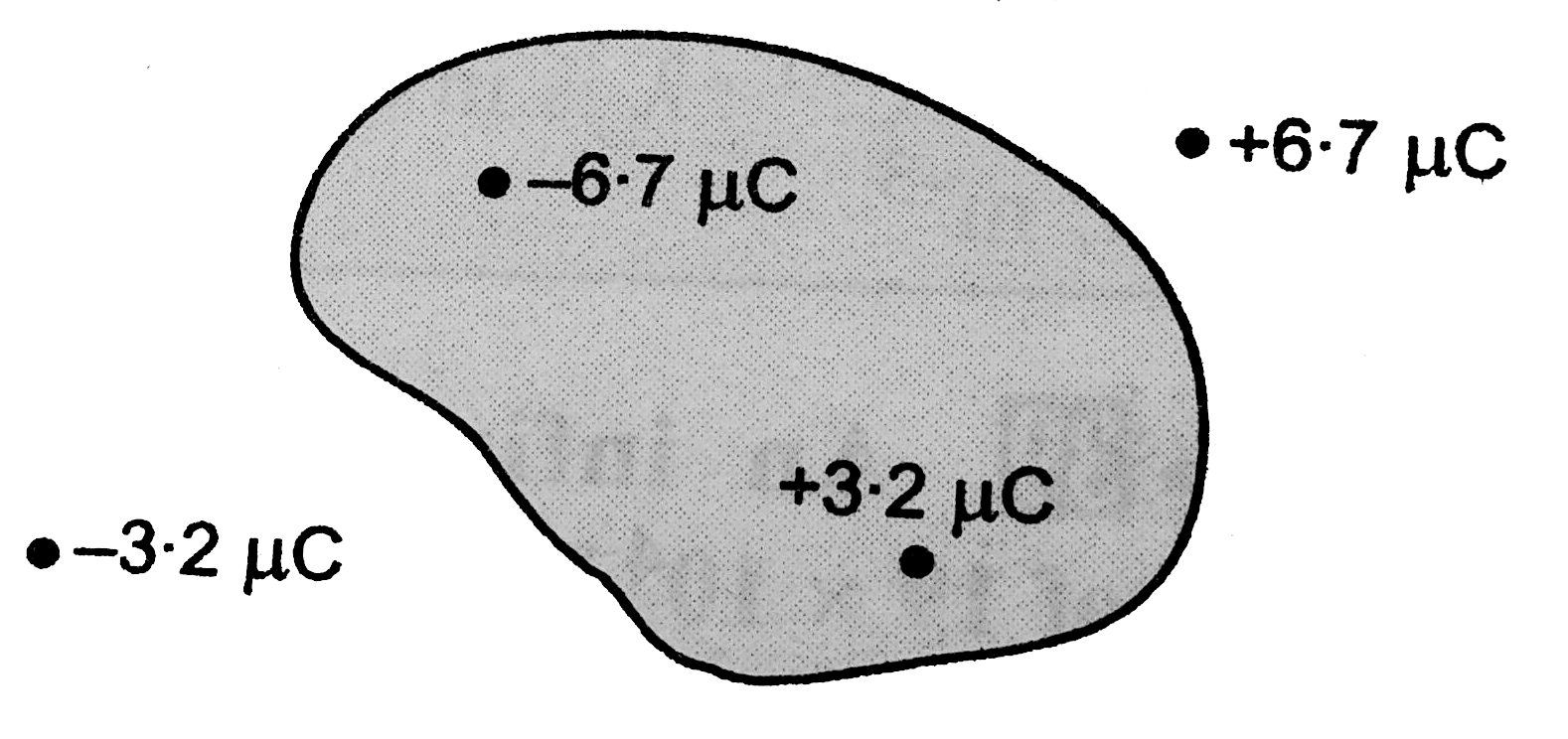The electric flux through the surface

in fig. (iv) is the largest
in fig. (iii) is the least
in fig. (ii) is same as fig.(iii) but is smaller than fig.(iv)
Is the same for all the figures.
The correct Answer is:D
Similar Questions
Knowledge Check
A cubical guassian surface encloses 24 C of charge. The electric flux through each surface of the cube is
A24ε0V−mB4ε0V−mC12ε0V−mD2.4ε0V−mA point charge 4μC is at the centre of a cubic Gaussian surface 10 cm on edge. Net electric flux through the surface is
A2.5×105Nm2C−1B4.5×105Nm2C−1C4.5×106Nm2C−1D2.5×106Nm2C−1A point charge of 1.77 μC is at the centre of a cubical gaussian surface having each side 50 cm. what is the net electric flux through the surface?
A105Nm2C−1B1.5×105Nm2C−1C2×105Nm2C−1D2.5×105Nm2C−1
Fig shows a closed surface surrounding some electric charges (a) what is the net electric flux through the surface? (b) Is the electric flux directed inward or outward from the surface ?

View SolutionAn arbitary surface enclose an electric dipole of dipole moment 20×10−6 C-m, What is the electric flux through this surface?
View SolutionA point charges of 2.0μC is at the centre of a cubic Gaussian surface 9.0cm on edge . What is the net electric flux through the surface?
View SolutionA point charge of 2.0μC is at center of a cublic Gaussian surface 9.0 cm on edge. What is the net electric flux through the surface?
View SolutionA point charge of 2.0μC is at the centre of a cubic Gaussian surface 9.0 cm on edge. What is the net electric flux through the surface?
View Solution
